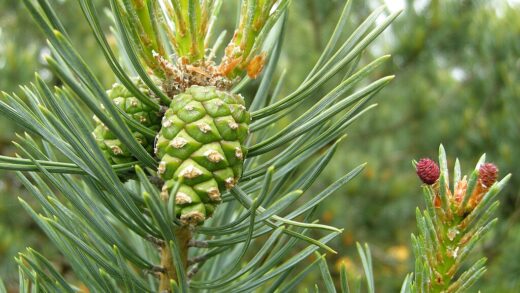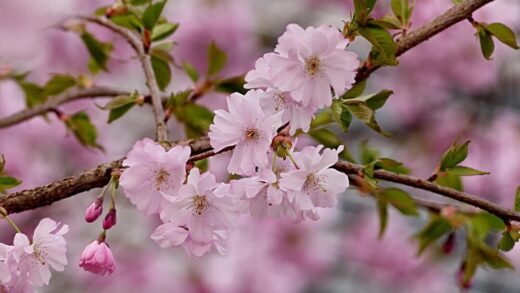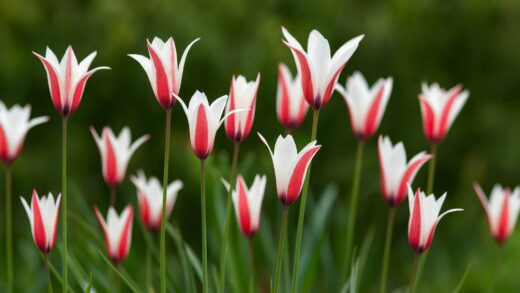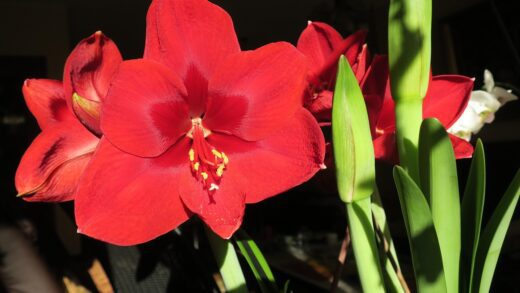Understanding the specific water requirements of sea thrift is fundamental to its cultivation, as this is the area where many gardeners inadvertently cause problems. This plant is a classic example of a xerophyte, meaning it is exceptionally well-adapted to dry conditions and has a very low water demand once established. Its entire physiology, from its deep taproot to its slender, waxy leaves, is designed to conserve moisture and thrive in environments with infrequent rainfall. Therefore, the guiding principle for irrigating sea thrift is one of restraint and caution, as overwatering is the single most common reason for its failure in a garden setting.
The most critical period for watering is during the plant’s establishment phase. When you first plant sea thrift, whether as a nursery-grown specimen or a new division, its root system is not yet developed enough to efficiently seek out water from the surrounding soil. During its first growing season, you will need to provide consistent moisture to encourage strong root growth. This typically means watering deeply once a week, or more often during periods of extreme heat and drought, always allowing the top few inches of soil to dry out completely before watering again.
This initial watering regimen helps the plant build the resilient root structure it needs to become self-sufficient. The goal is to encourage the roots to grow deep into the soil profile in search of moisture, which anchors the plant and builds its drought tolerance. Frequent, shallow watering should be avoided, as this promotes a weak, shallow root system that will be more dependent on supplemental irrigation in the long term. A thorough soaking that penetrates deep into the soil is far more effective.
Once sea thrift is fully established, which usually takes about one full growing season, its need for supplemental water plummets. In most climates that receive regular rainfall, you may not need to water it at all. The plant is more than capable of surviving and thriving on natural precipitation alone. In arid climates or during prolonged and severe droughts, occasional deep watering may be necessary to prevent the plant from becoming overly stressed, but this should be the exception rather than the rule.
The dangers of overwatering
Overwatering is the primary adversary of a healthy sea thrift plant. Its root system is highly adapted to dry, airy soils and cannot tolerate being in consistently wet or waterlogged conditions. When the soil is oversaturated, the air pockets that are essential for root respiration become filled with water, effectively suffocating the roots. This lack of oxygen leads to root decay, creating an entry point for opportunistic fungal pathogens that cause root and crown rot.
More articles on this topic
The symptoms of overwatering can sometimes be misleading, as a wilting plant is often the first sign. A gardener’s natural instinct is to provide more water, but in the case of sea thrift, this wilting is likely due to the roots already being compromised and unable to take up water, not a lack of moisture in the soil. Other signs of excessive watering include yellowing or browning foliage, a soft or mushy base (crown rot), and a general lack of vigor. Once crown rot has set in, the plant is often beyond saving.
To avoid this common pitfall, always err on the side of caution and allow the soil to become quite dry before even considering watering an established plant. A simple touch test is the most reliable method: insert your finger into the soil near the plant. If you feel any moisture within the top two to three inches, there is no need to water. This simple habit will prevent you from providing unnecessary moisture and creating the anaerobic conditions that sea thrift detests.
The type of soil plays a significant role in how easily a plant can be overwatered. In heavy clay soils that retain moisture for long periods, the risk is extremely high. This is why soil preparation is so crucial; amending the soil with grit or sand, or planting in raised beds, creates a much larger margin for error. In a well-draining, sandy or gravelly soil, excess water drains away quickly, making it much more difficult to overwater the plant to the point of causing harm.
Recognizing signs of water stress
While sea thrift is exceptionally drought-tolerant, it is not invincible and can show signs of water stress during extreme and prolonged periods of drought, especially when planted in containers or very sandy soils that dry out quickly. One of the first indicators of underwatering is a subtle change in the foliage. The normally vibrant green, grass-like leaves may begin to look dull, greyish, or develop brown tips as the plant struggles to draw enough moisture to maintain its turgor.
More articles on this topic
If the dry conditions persist, you may notice the foliage beginning to wilt or droop. Unlike the wilting caused by overwatering, this will occur when the soil is visibly and demonstrably bone dry. The outer leaves of the mound may start to yellow and die back as the plant conserves its limited resources for the central, newer growth. Flower production will also cease, and existing flowers may wilt and fade prematurely as the plant enters a state of dormancy to survive the drought.
It is important to differentiate between temporary wilting during the hottest part of a summer day and genuine water stress. Some plants, including sea thrift, may wilt slightly in the afternoon heat to conserve moisture, only to perk up again in the cooler evening hours. This is a natural protective mechanism and not necessarily a sign that the plant needs immediate watering. However, if the plant remains wilted in the morning, it is a clear indication that it requires a deep drink.
When you do need to water a stressed plant, it is crucial to do so effectively. Provide a long, slow, and deep soaking that allows the water to penetrate far into the soil profile and reach the plant’s deep taproot. Watering lightly and frequently will only moisten the surface and will not alleviate the underlying drought stress. After a thorough watering, a genuinely thirsty sea thrift should show signs of recovery within a few hours, with its foliage regaining its color and firmness.
Watering in different seasons
The water needs of sea thrift vary significantly throughout the year, dictated by the changing seasons and weather patterns. In spring, as the plant emerges from winter dormancy and begins its active growth phase, it requires a moderate amount of moisture to fuel the development of new leaves and flower stalks. In most regions, natural spring rainfall is sufficient to meet these needs. However, if you experience an unusually dry spring, you may need to provide supplemental water to newly planted or young specimens to support their growth.
Summer is the period when the risk of both underwatering and overwatering is highest. During hot, dry spells, established plants will rely on their deep root systems, but container-grown plants or those in very shallow soil may require occasional watering. Always check the soil before irrigating. Conversely, during periods of heavy summer rain, it is crucial that the soil drains effectively to prevent the roots from becoming waterlogged. The combination of high temperatures and wet soil is particularly conducive to the development of fungal rot.
As autumn arrives, the plant’s growth slows down, and its water requirements decrease accordingly. The cooler temperatures and increased rainfall in most climates mean that supplemental watering is rarely necessary for garden-grown plants. This is a critical time for the plant to prepare for winter, and excessive moisture around the crown can increase the risk of rot during the cold, damp months ahead. Taper off any supplemental watering you may have been providing during the summer.
During the winter, sea thrift enters a state of dormancy, and its water needs are minimal. The evergreen foliage may persist, but the plant is not actively growing. In most regions, winter precipitation will provide all the moisture required. The primary concern during this season is ensuring the plant is not sitting in cold, waterlogged soil, which is almost always fatal. Excellent drainage is the best defense against winter kill, allowing excess moisture from rain or melting snow to drain away freely from the plant’s sensitive crown.
Special considerations for containers
Growing sea thrift in containers requires a more attentive approach to watering compared to growing it in the ground. The soil in pots and containers heats up and dries out much more quickly than garden soil, especially on hot, windy days. While sea thrift is drought-tolerant, the limited soil volume in a container means its roots cannot seek out moisture from deep within the ground, making it more dependent on you for irrigation. This necessitates a more regular watering schedule during the growing season.
The key to successfully watering container-grown sea thrift is to use a pot with ample drainage holes and a very gritty, fast-draining potting mix. A standard potting compost should be amended with at least 30-50% horticultural grit, perlite, or coarse sand. This ensures that even when you do water thoroughly, the excess moisture can escape quickly, preventing the roots from becoming waterlogged. Terra cotta pots are an excellent choice as their porous nature allows the soil to dry out more evenly.
During the spring and summer, you will need to monitor your containers closely. The frequency of watering will depend on the size of the pot, the weather, and its location. A good practice is to water deeply whenever the top inch or two of the potting mix feels dry to the touch. When you water, do so until you see water running out of the drainage holes at the bottom of the pot. This ensures that the entire root ball has been moistened.
In the winter, the risk of overwatering in containers increases significantly. The soil stays colder and wetter for longer, and the dormant plant is not actively taking up water. Move containers to a sheltered location, such as against a house wall or under the eaves of a roof, to protect them from excessive winter rain. You can also raise the pots up on “pot feet” to ensure the drainage holes do not become blocked and to improve air circulation around the base. Only water very sparingly during the winter, just enough to prevent the soil from drying out completely.


















